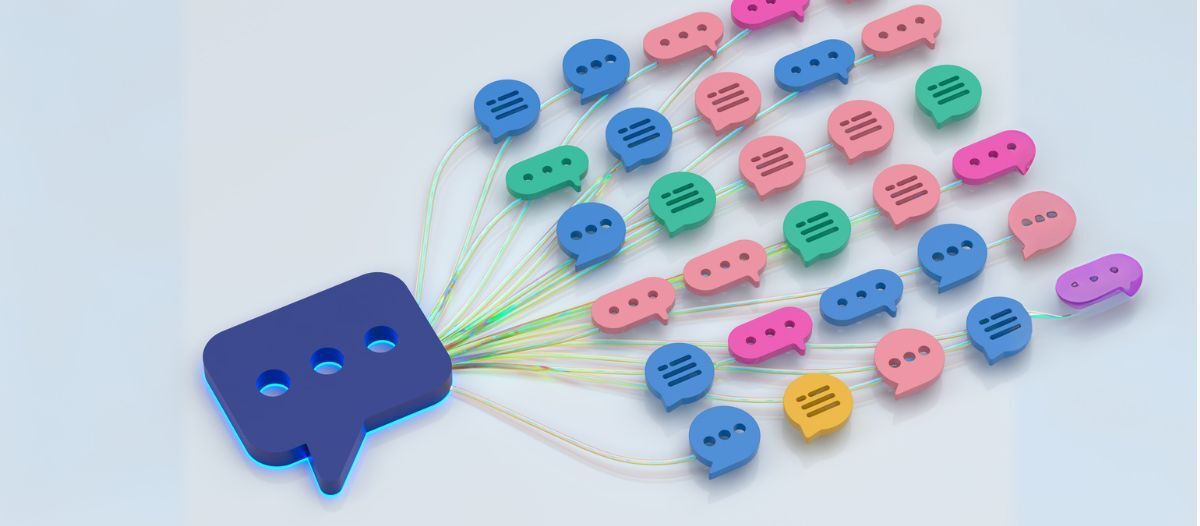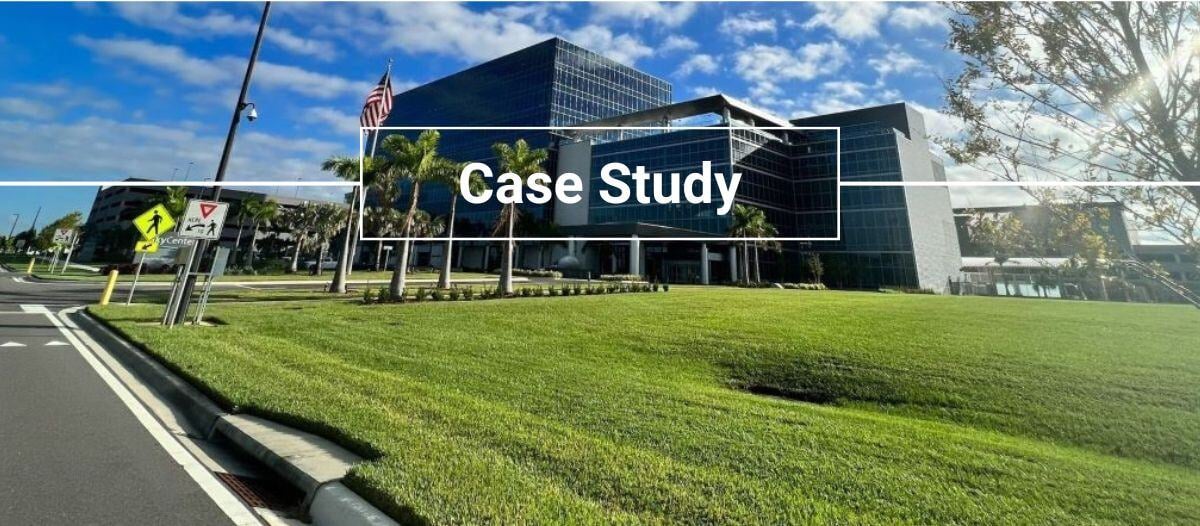Loud & Clear
Enhancing facility operations with smarter communication strategies

In modern health care environments, the ability to coordinate effectively across departments has become increasingly critical to sustaining operational efficiency and high-quality service delivery. As the demands placed on health care systems grow more complex, clinical and supporting facilities teams must work in lock step to ensure continuity in patient care and day-to-day functioning. This evolving landscape is prompting a reassessment of traditional communication models and workflow structures.
Large-scale health care operations are redesigning internal coordination as cloud-based, real-time communication technology tools are leading the charge and fostering more collaborative practices. These changes are not merely technical upgrades — they reflect a broader shift toward integrated operational ecosystems that prioritize agility, responsiveness and shared accountability. By examining proven strategies from the field, health care organizations are enhancing staff alignment, reducing delays and strengthening resilience in high-pressure environments, which allows them to optimize performance and maintain critical services across a range of complex environments.
Common communication barriers
The scale and complexity of health care facilities often present significant barriers to effective communication between operational teams, clinical staff and support services. One of the most pressing challenges is the physical space between departments. Expansive campuses with multiple towers, each containing several floors, demand frequent cross-campus coordination. Tasks as routine as meal delivery can be complicated by long walking distances, often requiring up to 10 minutes of travel time between locations or needing to use high-demand elevators.
The geographical sprawl places a strain on logistics, particularly when kitchens must serve multiple units simultaneously. The pace of operations rarely slows to accommodate these distances; for example, meal production continues regardless of delivery delays. Without real-time communication and visibility into staff locations, teams risk bottlenecks that can compromise service timeliness. Operational leaders must have confidence that employees are set up for success to carry out tasks efficiently, even amid overlapping responsibilities and unpredictable interruptions.
Traditional push-to-talk solutions like walkie-talkies are no longer sufficient for today’s fast-paced, tech-enabled health care environments. The limitations of walkie-talkies — such as poor audio clarity, limited range and lack of integration with modern systems — become more pronounced. Instead, communication devices that offer advanced features like AI insights and trends surfaced from conversations, real-time indoor location tracking and built-in data analytics are crucial. These tools not only improve operational efficiency but also come with better battery life, durability and cost-effectiveness. For organizations still relying on outdated walkie-talkies, or no team-enriching devices at all, the message is clear: evolve or risk falling behind.
Beyond routine logistics, communication becomes even more critical during high-pressure events. Scenarios such as elevator outages, emergency codes or staffing shortages demand rapid, coordinated responses. In these moments, the ability to disseminate information quickly and reassign personnel across or within departments is critical. Delays in reaching the right individuals — whether due to physical distance or outdated communication methods — can lead to operational breakdowns and service disruptions.
Additionally, various support departments often operate in parallel rather than in partnership. While their responsibilities may not be directly interdependent, many share the same physical spaces, performing different tasks in common areas such as nursing care units, at different times.
Communication tools between teams could help bridge these operational silos, enabling departments that might not otherwise interact to coordinate more effectively. By increasing visibility and facilitating quick touch points across teams, there is the potential to foster a more collaborative environment. The result is improved efficiency, stronger teamwork and a more cohesive approach to service across the facility.
In the absence of reliable, associate location awareness and real-time communication, teams are left to operate with limited situational awareness. This can result in duplicated efforts, wasted time waiting for staff to return before assigning new tasks and reduced agility in reallocating resources during staffing gaps or emergencies.
Case study: Accelerating room service meal deliveryLarge hospitals that offer hotel-style room service often struggle to meet tight delivery windows once a patient places an order. The goal of these teams is to reduce the interval average between ticket print-out and tray arrival to the patient and to increase the total number of trays delivered on time. Luckily, a real-time communication and location platform equipped with location awareness in the kitchen allows managers and supervisors to stay on top of operations. Couriers can carry handheld devices that automatically report their position, while a dashboard in the kitchen highlights employees who have been away the longest. Managers can instantly connect with the nearest courier, direct a return trip or reassign pending orders without waiting for staff to appear in person. This creates a healthy sense of urgency, which has shown clear results. One large hospital in Virginia recorded a 9 percent reduction in average ticket-to-delivery time, and a second facility in South Carolina implemented the same approach and achieved a 10 percent improvement. Case study: Raising consistency in bedside meal serviceBedside service programs, in which entire nursing units receive meals in synchronized waves, require strict and consistent timing so nurses can coordinate factors like insulin administration, feeding assistance and other time-sensitive care activities. If late trays become a recurrent issue, this can undermine nursing workflows and patient satisfaction scores. Through a modern communication system capable of collecting timestamp data for each delivery step, managers can easily analyze data on the constraints that lead to bottlenecks to improve consistency. For example, is the staff running late? Is food production not happening at a quick enough rate? Are prep stations running out of product halfway through a meal wave? Which nursing units or associates should the leadership team focus on? This specific data focuses on the details and takes action to make a change, improving timeliness metrics that significantly impact nursing units. A California hospital achieved a 19 percent gain in on-time performance, while a second site in the same state recorded an 11 percent improvement after replicating the model. These outcomes underscore the value of pairing transparent data streams with immediate, campus-wide communication. When staff can see where delays originate, consistency becomes a tangible, trackable objective rather than an aspirational target. These are benefits that extend well beyond the meals department to any operation facing similar coordination challenges. |
Measuring success & communication effectiveness
Assessing the value of a communication tool in a health care facility requires more than measuring response times or user adoption rates. In high-pressure settings where stakes are high and infrastructure constraints are significant, reliability and ease of deployment become just as critical as the tool’s functionality.
One of the most foundational success factors is connectivity. Hospitals are often constructed with dense materials such as reinforced steel and concrete, which can interfere with conventional Wi-Fi and cellular signals. Communication systems that depend solely on a facility’s existing network infrastructure are vulnerable to dead zones and inconsistent coverage, particularly in older buildings or those with multiple towers. These gaps can undermine real-time coordination, leading to service interruptions and a loss of confidence in the system’s reliability.
To be effective, communication platforms must operate on a resilient signal backbone, often incorporating multi-antenna cellular technology to ensure consistent coverage. Solutions that arrive ready-to-use — without relying on hospital IT departments to install or configure additional hardware — are especially valuable. This is particularly true in heavily regulated industries, which often introduce lengthy approval processes. In many cases, gaining access to internal networks can take months or even years.
For facility operations teams, especially those working as external service providers or third-party partners, navigating these constraints can be a significant barrier. Unlike manufacturing plants or hospitality settings, health care environments frequently involve tenant-like arrangements, in which service teams do not control the building’s infrastructure. In such contexts, communication tools that avoid the need for integration with proprietary hospital systems and instead leverage publicly available signals for features like indoor location tracking offer a distinct advantage.
Additionally, it is not just about how well tools transmit information, it is also about how well they fit into the day-to-day reality of clinical and operational workflows. Assessing physical design and practical functionality is just as important. Devices must be lightweight and compact enough to be worn comfortably throughout long shifts, yet durable enough to withstand frequent drops, spills and constant use in fast-paced environments. If a device is cumbersome, fragile or lacking critical capabilities, it can quickly become a barrier rather than a solution. These factors all impact the important fact that the team wants to use the device.
Success, therefore, is measured not only by how quickly a team can respond to a task but also by the stability, independence and scalability of the communication solution itself. Tools that can be deployed rapidly, perform consistently across varied building layouts and remain operational without heavy IT oversight are best positioned to support long-term improvements.
Choosing the right partner
Implementing a real-time communication platform is not merely a matter of selecting a product, it is a decision to engage with a long-term partner who understands the unique challenges of facility operations and is committed to driving innovation alongside operational teams. The most effective partnerships are built with technology providers that go beyond offering static solutions. In high-stakes environments like hospitals, needs shift rapidly and the tools of today may not fully address the complexities of tomorrow. Forward-thinking facility managers seek out partners that are agile, collaborative and invested in co-developing new capabilities.
A company’s current feature set is only one part of the equation; equally important is its willingness to adapt, iterate and align with facility-specific goals over time. The right communication partner is one that brings enthusiasm for the possibilities, values long-term success and treats its customers’ challenges as shared missions. These partners are not just vendors — they are contributors to service excellence, helping to define what operational success looks like in increasingly complex environments.
The next frontier in operational communication lies in automation of common tasks and AI-enhanced communication. While these technologies remain in early stages, their potential to reduce strain on human staff and enable greater precision in coordination is undeniable. Ultimately, the future of FM will be shaped by those willing to invest not only in technology, but in relationships that ensure that the technology works — for staff, for systems and for the people who depend on them.


Read more on Communication , Project Management and Leadership & Strategy or related topics Communication Skills , Performance Measures and Supplier or Vendor Management
Explore All FMJ Topics









